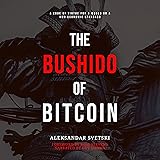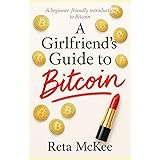The cryptocurrency world often feels like a rapidly evolving landscape, and recent events continue to shape its terrain. Specifically, the Bitcoin Cash (BCH) network experienced a significant hard fork on November 15, 2020, splitting into two distinct chains: BCH and the newly formed Bitcoin ABC (BCHA). This pivotal moment, as discussed in the accompanying video, wasn’t merely a technical hiccup; it was a profound illustration of ongoing debates within the broader Bitcoin community about governance and direction. Understanding these divisions helps illuminate the diverse visions for the future of Bitcoin itself.
The speaker in the video, having predicted this fork back in June 2020, offers valuable insights into the social and philosophical underpinnings of such splits. He emphasizes that these aren’t just random occurrences but rather symptoms of fundamental disagreements concerning who should decide the rules and future evolution of a decentralized network. Therefore, by exploring the causes and consequences of these forks, we can gain a clearer perspective on the varied paths that different Bitcoin iterations are now pursuing, each offering a unique approach to digital currency governance.
Understanding the Recent Bitcoin Cash Split and its Context
The recent division of Bitcoin Cash into BCH and Bitcoin ABC (BCHA) marked a contentious chapter in the ongoing evolution of cryptocurrencies. This hard fork, occurring on November 15, 2020, stemmed from disagreements over a proposed ‘Infrastructure Funding Plan’ (IFP) within Bitcoin ABC’s client, which would have redirected a percentage of block rewards to fund development. Many in the BCH community viewed this as a centralized tax on miners, challenging the decentralized ethos that underpins Bitcoin.
Consequently, the community fractured, leading to the creation of two separate chains, each with its own set of rules and development roadmap. Historically, such splits are not uncommon within the broader Bitcoin ecosystem. They highlight the intense passion and ideological differences among developers, miners, and users about the best way to scale and sustain peer-to-peer electronic cash. These events serve as crucial learning opportunities, revealing the complexities of achieving consensus in a decentralized environment.
The Fundamental Question: Who Decides Bitcoin’s Future?
Beneath the surface of technical debates and code changes lies a deeper, philosophical question that fuels every significant Bitcoin hard fork: Who holds the authority to decide the rules governing the network’s evolution? This question, as articulated in the video, is akin to resolving a persistent family dispute where surface-level arguments often mask more profound, unresolved issues. The various Bitcoin factions, despite originating from a shared vision, have arrived at fundamentally different answers.
This central disagreement has led to the emergence of distinct governance models, each representing a unique philosophy on decentralization, leadership, and adaptation. The way a community answers this question directly impacts its approach to scaling, security, and innovation. Therefore, examining these different models helps users understand not just the technical variations, but the core values driving each version of Bitcoin today.
Four Paths to Bitcoin’s Future: Exploring Governance Models
The speaker identifies four primary camps within the “legitimate Bitcoin community,” each adopting a distinct governance philosophy. These are not merely different cryptocurrencies but distinct social experiments in how a global, decentralized ledger can be managed and evolved. Examining these diverse approaches provides invaluable insight into the varied visions for Bitcoin’s future.
BTC: The Unchanging Ledger
Bitcoin (BTC), often referred to as “the original Bitcoin,” embraces a philosophy of minimal change and maximal stability. The prevailing narrative within this community suggests that the core protocol should remain largely unaltered, resisting hard forks and major consensus rule modifications. This approach stems from the belief that immutability is paramount, ensuring predictability and trust in the network.
Therefore, the BTC community often states that “no one gets to decide” on changes, effectively implying that significant modifications are inherently undesirable. Innovation is encouraged through ‘soft forks’ and off-chain solutions like the Lightning Network, which aim to extend functionality without altering the foundational rules. This model appeals to those who prioritize stability and a conservative approach to technological evolution, viewing Bitcoin as a digital gold standard.
BSV: The Vision of a Single Authority
Bitcoin SV (BSV) emerged from a hard fork of Bitcoin Cash in 2018, primarily advocating for a return to what its proponents believe is Satoshi Nakamoto’s original vision. Central to BSV’s philosophy is the belief that one individual, Craig Wright, is Satoshi and therefore holds unique authority in guiding the network’s development. This perspective creates a hierarchical governance structure, contrasting sharply with BTC’s no-one-decides stance.
The BSV community thus believes that a single, authoritative leader should guide changes, aiming for a “locked down” protocol after initial scaling adjustments. This model attracts those who seek clear leadership and a definitive roadmap, even if it means centralizing decision-making power. It represents a different interpretation of decentralization, prioritizing a singular vision over broad, distributed consensus for rule changes.
BCH: Majority Rule and Collective Progress
Bitcoin Cash (BCH), from which Bitcoin ABC recently split, generally favors a system where the majority of the community, often represented by miners and developers, decides on protocol changes. This approach is rooted in the belief that active governance and adaptability are crucial for Bitcoin to function as efficient peer-to-peer electronic cash. The speaker references the “Bitchevik” analogy, highlighting the appeal of majority rule in shaping consensus.
Within this model, significant changes, including hard forks, are considered viable and even necessary for progress, provided they garner sufficient support. Decision-making is often a collaborative process involving discussions and signaling within the community to reach a broad consensus. This governance style appeals to those who value collective decision-making and continuous adaptation to meet evolving technological needs, viewing Bitcoin as a dynamic medium of exchange.
BCHA: The Free Market of Innovation
Bitcoin ABC (BCHA), the newest entrant among these major Bitcoin derivations, appears to be forging a unique path that emphasizes individual agency and a “free market” approach to innovation. As explained in the video, the implied narrative for BCHA is “anyone can make a decision, and anyone can decide to follow or not.” This voluntarist perspective suggests that developers should be free to propose changes, and the community (miners, users) will ultimately vote with their hash power and adoption.
This model, which reportedly includes a structured approach of bi-annual hard forks and a Global Network Council for funding, essentially puts innovation to a regular test. It challenges developers to consistently present compelling alternatives that resonate with the user base, fostering competition among ideas rather than relying on strict consensus or singular authority. This philosophy may attract those who believe in radical decentralization of development, where the best ideas naturally gain traction through market mechanisms, seeing Bitcoin as an evolving platform for digital commerce.
Bitcoin’s Diverse Ecosystem: A Path to Stability
The emergence of these four distinct Bitcoin iterations – BTC, BSV, BCH, and BCHA – might initially seem like fragmentation, yet it actually represents a fascinating and potentially stable ecosystem. The speaker highlights that the number four, in numerology, often symbolizes stability, drawing an analogy to a stable four-legged table or chair. This concept suggests that having multiple, well-defined approaches allows for a robust set of “experiments” in cryptocurrency governance.
Each of these chains is fundamentally built upon Satoshi’s original vision of peer-to-peer electronic cash, despite their differing interpretations of how to achieve it. By allowing these diverse philosophies to coexist and compete, the broader Bitcoin ecosystem benefits from a natural selection process. Different user groups and developers can gravitate towards the chain whose governance model aligns best with their values and needs, fostering resilience across the entire digital asset space. This diversification reduces the risk of a single point of failure in the quest for a truly sustainable digital currency.
Navigating the Landscape: Choosing Your Bitcoin Path
The existence of these distinct Bitcoin paths offers individuals a unique opportunity to align with the philosophy that best resonates with their personal beliefs about sovereignty and technological evolution. As the speaker suggests, some will prefer the unchanging, eternal nature of BTC, valuing its stability above all else. Others may seek the decisive leadership offered by BSV, desiring a clear, singular vision for the network’s development. Furthermore, those who favor collective decision-making and adaptability might find BCH’s majority-rule approach more appealing.
The new BCHA model, with its emphasis on a free market of ideas and voluntarism, presents another compelling choice for those who believe in constant innovation driven by competition. Each of these paths represents a viable approach to building a robust digital economy, particularly as society potentially navigates complex global challenges. The future of Bitcoin, therefore, lies not in a single, monolithic entity, but in this rich, diverse, and competitive ecosystem, offering users a genuine choice in their preferred model of digital financial freedom.







